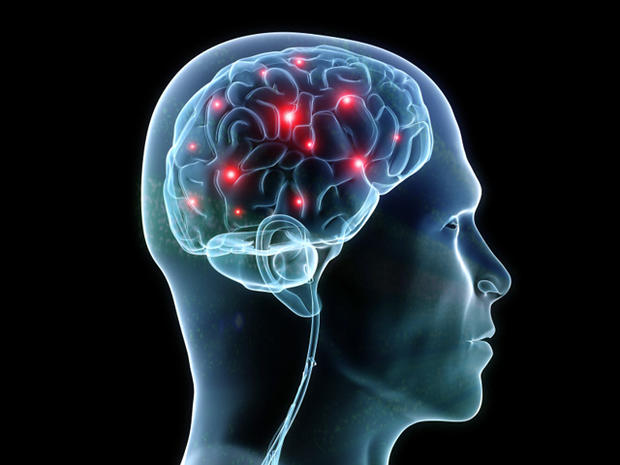Rare "HDLS" brain disease more common than once thought: Study
(CBS) A rare brain disease called hereditary diffuse leukoencephalopathy with spheroids (HDLS) may not be so rare after all. Researchers at the Mayo Clinic in Florida say they've identified 14 genetic mutations that may lead to the disease that until now, could only be diagnosed by a brain biopsy or autopsy.
PICTURES: Alzheimer's disease: 7 things that raise your risk
"Given this finding, we may soon have a blood test that can help doctors diagnose HDLS, and I predict we will find it is much more common than anyone could have imagined," study co-author Dr. Zbigniew K. Wszolek, a neurologist at the Mayo Clinic, said in a written statement.
HDLS is a devastating disease of the brain's white matter, the areas of the brain which contain nerve fibers and transmit signals from neurons. Multiple sclerosis is a more common disease that targets the brain's white matter. Symptoms of HDLS include depression, irritability, impaired balance, delusions, and dementia.
"Because the symptoms of HDLS vary so widely - everything from behavior and personality changes to seizures and movement problems - these patients were misdiagnosed as having either schizophrenia, epilepsy, frontotemporal dementia, Parkinson's disease, multiple sclerosis, stroke, or other disorders," Wszolek said. "Many of these patients were therefore treated with drugs that offered only toxic side effects.
For the study, published in the Dec. 25 issue of Nature Genetics, researchers studied DNA samples from 14 families with at least one family member diagnosed with HDLS. The researchers compared DNA from the families to DNA from 2,000 disease-free people. Using state-of-the-art sequencing methods, the researchers discovered 14 mutations on the CSF1R protein, a receptor that's found in the brain's immune cells, in people with HDLS. The researchers found many family members of a person with HLDS also had the gene, but they were often diagnosed with other health problems, which suggests HLDS might be the under-diagnosed, underlying condition behind other diseases.
"With no other disease have we found so many affected families so quickly," Wszolek said. "That tells me this disease is not rare, but quite common."
The rare disease was first described by Swedish researchers who discovered 17 of 71 family members in one family had the rare condition, according to the United Leukodystrophy Foundation. The disease can't be cured; supportive care to ease symptoms is the only therapeutic option.


